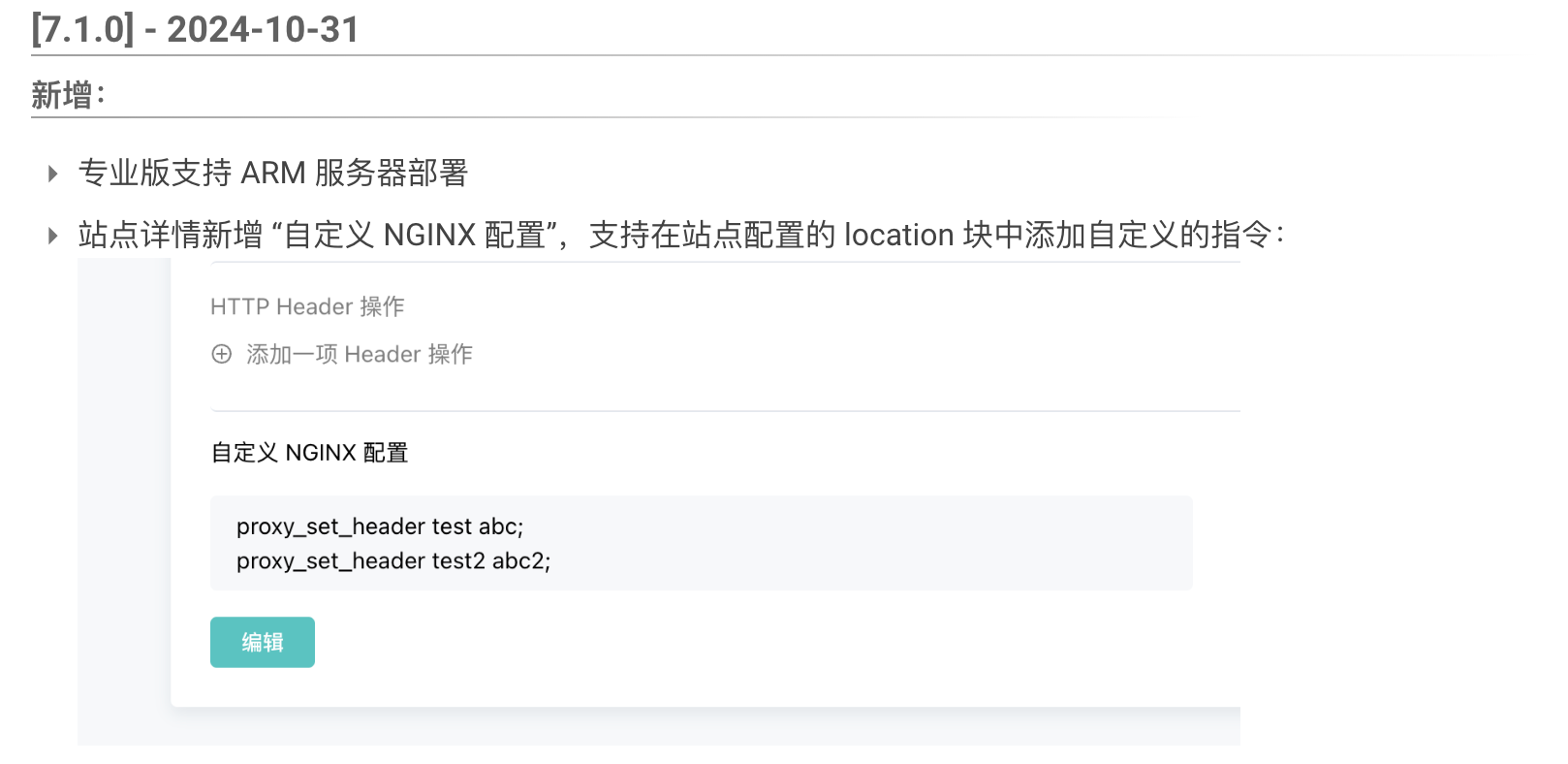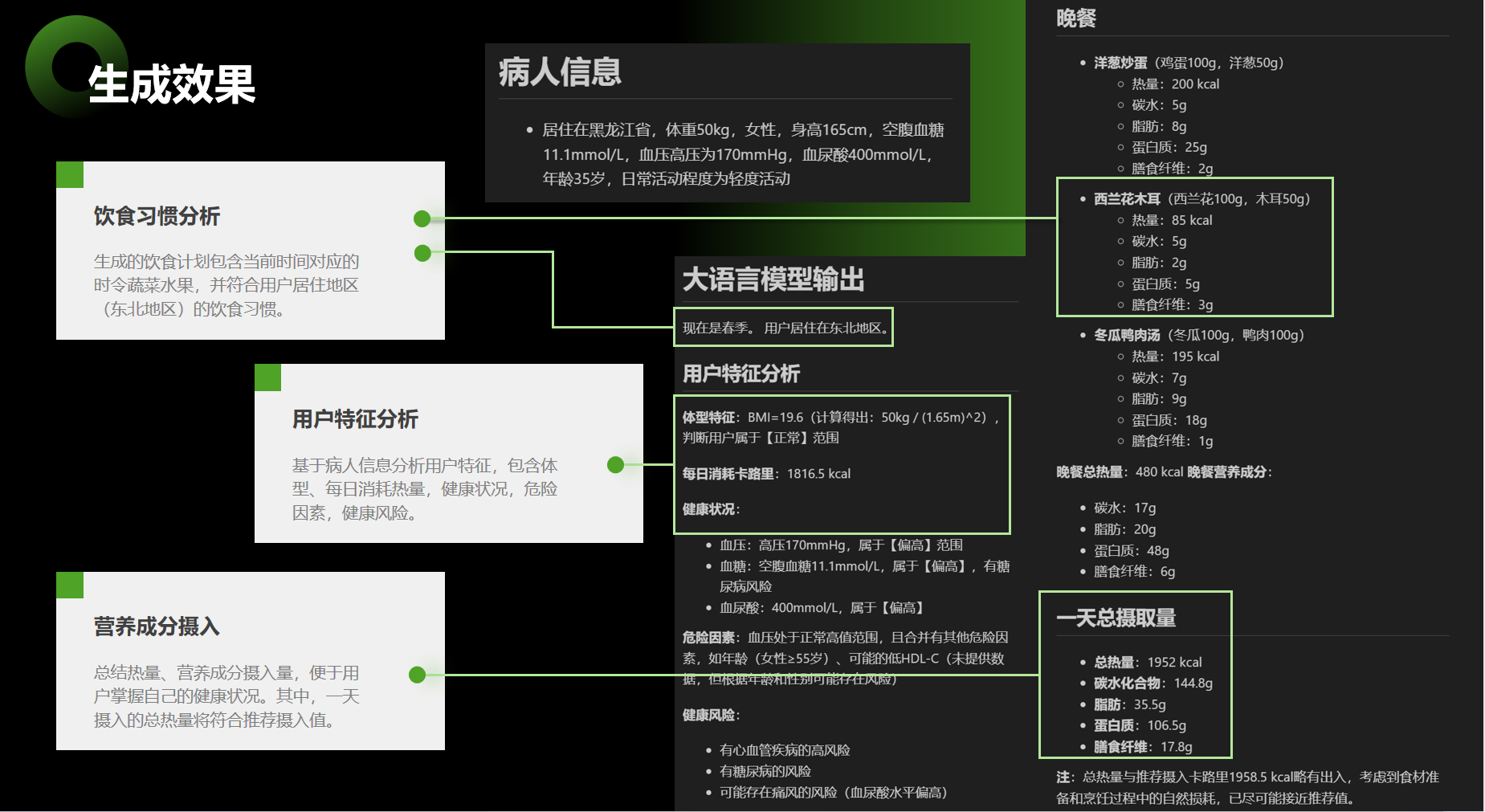一、linux 启动内核时的第一个进程 init_task
linux 进程的鼻祖 0,1,2,我在其他文章中,有具体讲解,链接是: linux 之0号进程、1号进程、2号进程_linux下0号进程 swap-CSDN博客。
在这里就不具体展开了。请看上面的文章详解。
当linux启动时,最先会通过汇编代码进行硬件和CPU的初始化,最后会跳转到C代码,而最初跳转到的C代码入口为:
/* 代码地址: linux/init/Main.c */
asmlinkage __visible void __init start_kernel(void)补充一点:内核在执行C语言部分是有一段汇编语言,代码路径:kernel/arch/arm64/kernel/head.S
head.S 的汇编大致执行以下内容:
- preserve_boot_args用来保留bootloader传递的参数,比如ARM上通常的dtb的地址
- el2_setup: 用来trap到EL1,说明我们在运行此指令前还在EL2
- __create_page_tables: 用来创建页表,linux才有的是页面管理物理内存的,在使用虚拟地址之前需要设置好页面,然后会打开MMU。目前还是运行在物理地址上的
- __primary_switch: 主要任务是完成MMU的打开工作
- 调用__primary_switched来设置0号进程的运行内核栈,然后调用start_kernel函数,至此,0号进程已经运行了,执行的函数就是 start_kernel 。
在start_kerenl函数中,进行了系统启动过程中几乎所有重要的初始化,包括内存、页表、必要数据结构、信号、调度器、硬件设备等。
而这些初始化是由谁来负责的?就是由init_task这个进程。init_task是静态定义的一个进程,也就是说当内核被放入内存时,它就已经存在,它没有自己的用户空间,一直处于内核空间中运行,并且也只处于内核空间运行。当它执行到最后,将start_kernel中所有的初始化执行完成后,会在内核中启动一个kernel_init内核线程和一个kthreadd内核线程,kernel_init内核线程执行到最后会通过execve系统调用执行转变为我们所熟悉的init进程,而kthreadd内核线程是内核用于管理调度其他的内核线程的守护线程。在最后init_task将变成一个idle进程,用于在CPU没有进程运行时运行它,它在此时仅仅用于空转。
init_task进程也就是0号进程,也是idle 进程,也是swapper进程, 执行完 start_kernel 函数后,运行队列rq 的idle 的指针会指向init_task的静态定义的地址,并不会放到运行队列中。
kernel_init进程 ,也是1号进程,也是系统的init进程,也有的会说systemd进程。
kthreadd进程,也是2号进程,负责创建内核线程,而用户空间创建进程,就需要调用fork系统调用。
上面这三个进程的随着内核启动,变化的流程图如下:

上面标注的idle进程其实不严谨,此时还没有变成idle进程,还是正常运行的进程。
二、sched_init 调度初始化
在start_kernel中对调度器进行初始化的函数就是sched_init,其主要工作为
- 对相关数据结构分配内存
- 初始化root_task_group
- 初始化每个CPU的rq队列(包括其中的cfs队列和实时进程队列)
- 将init_task进程转变为idle进程 (只是把rq的idle指针指向 init_task)
需要说明的是init_task在这里会被转变为idle进程,但是它还会继续执行初始化工作,相当于这里只是给init_task挂个idle进程的名号,它其实还是init_task进程,只有到最后init_task进程开启了kernel_init和kthreadd进程之后,才转变为真正意义上的idle进程。
内核源码路径:kernel/kernel/sched/core.c
void __init sched_init(void)
{
unsigned long ptr = 0;
int i;
/* Make sure the linker didn't screw up */
BUG_ON(&idle_sched_class + 1 != &fair_sched_class ||
&fair_sched_class + 1 != &rt_sched_class ||
&rt_sched_class + 1 != &dl_sched_class);
#ifdef CONFIG_SMP
BUG_ON(&dl_sched_class + 1 != &stop_sched_class);
#endif
wait_bit_init();
/* 计算所需要分配的数据结构空间 */
#ifdef CONFIG_FAIR_GROUP_SCHED
ptr += 2 * nr_cpu_ids * sizeof(void **);
#endif
#ifdef CONFIG_RT_GROUP_SCHED
ptr += 2 * nr_cpu_ids * sizeof(void **);
#endif
if (ptr) {/* 分配内存 */
ptr = (unsigned long)kzalloc(ptr, GFP_NOWAIT);
#ifdef CONFIG_FAIR_GROUP_SCHED
/* 设置 root_task_group 每个CPU上的CFS调度实体指针se */
root_task_group.se = (struct sched_entity **)ptr;
ptr += nr_cpu_ids * sizeof(void **);
/* 设置 root_task_group 每个CPU上的CFS运行队列指针cfs_rq */
root_task_group.cfs_rq = (struct cfs_rq **)ptr;
ptr += nr_cpu_ids * sizeof(void **);
root_task_group.shares = ROOT_TASK_GROUP_LOAD;
init_cfs_bandwidth(&root_task_group.cfs_bandwidth);
#endif /* CONFIG_FAIR_GROUP_SCHED */
#ifdef CONFIG_RT_GROUP_SCHED
/* 设置 root_task_group 每个CPU上的实时调度实体指针se */
root_task_group.rt_se = (struct sched_rt_entity **)ptr;
ptr += nr_cpu_ids * sizeof(void **);
root_task_group.rt_rq = (struct rt_rq **)ptr;
ptr += nr_cpu_ids * sizeof(void **);
#endif /* CONFIG_RT_GROUP_SCHED */
}
#ifdef CONFIG_CPUMASK_OFFSTACK
for_each_possible_cpu(i) {
per_cpu(load_balance_mask, i) = (cpumask_var_t)kzalloc_node(
cpumask_size(), GFP_KERNEL, cpu_to_node(i));
per_cpu(select_idle_mask, i) = (cpumask_var_t)kzalloc_node(
cpumask_size(), GFP_KERNEL, cpu_to_node(i));
}
#endif /* CONFIG_CPUMASK_OFFSTACK */
/* 初始化实时进程的带宽限制,用于设置实时进程在CPU中所占用比的 */
init_rt_bandwidth(&def_rt_bandwidth, global_rt_period(), global_rt_runtime());
init_dl_bandwidth(&def_dl_bandwidth, global_rt_period(), global_rt_runtime());
#ifdef CONFIG_SMP
/* 初始化默认的调度域,调度域包含一个或多个CPU,负载均衡是在调度域内执行的,相互之间隔离 */
init_defrootdomain();
#endif
#ifdef CONFIG_RT_GROUP_SCHED/* 初始化实时进程的带宽限制,用于设置实时进程在CPU中所占用比的 */
init_rt_bandwidth(&root_task_group.rt_bandwidth,
global_rt_period(), global_rt_runtime());
#endif /* CONFIG_RT_GROUP_SCHED */
#ifdef CONFIG_CGROUP_SCHED
task_group_cache = KMEM_CACHE(task_group, 0);
/* 将分配好空间的 root_task_group 加入 task_groups 链表 */
list_add(&root_task_group.list, &task_groups);
INIT_LIST_HEAD(&root_task_group.children);
INIT_LIST_HEAD(&root_task_group.siblings);
/* 自动分组初始化
autogroup_init(&init_task);
#endif /* CONFIG_CGROUP_SCHED */
for_each_possible_cpu(i) { /* 遍历设置每一个CPU */
struct rq *rq;
rq = cpu_rq(i);/* 获取CPUi的rq队列 */
raw_spin_lock_init(&rq->lock);/* 初始化rq队列的自旋锁 */
rq->nr_running = 0;/* CPU运行队列中调度实体(sched_entity)数量为0 */
rq->calc_load_active = 0;/* CPU负载 */
rq->calc_load_update = jiffies + LOAD_FREQ;/* 负载下次更新时间 */
init_cfs_rq(&rq->cfs);/* 初始化CFS运行队列 */
init_rt_rq(&rq->rt);/* 初始化实时进程运行队列 */
init_dl_rq(&rq->dl);
#ifdef CONFIG_FAIR_GROUP_SCHED
INIT_LIST_HEAD(&rq->leaf_cfs_rq_list);
rq->tmp_alone_branch = &rq->leaf_cfs_rq_list;
/*
* How much CPU bandwidth does root_task_group get?
*
* In case of task-groups formed thr' the cgroup filesystem, it
* gets 100% of the CPU resources in the system. This overall
* system CPU resource is divided among the tasks of
* root_task_group and its child task-groups in a fair manner,
* based on each entity's (task or task-group's) weight
* (se->load.weight).
*
* In other words, if root_task_group has 10 tasks of weight
* 1024) and two child groups A0 and A1 (of weight 1024 each),
* then A0's share of the CPU resource is:
*
* A0's bandwidth = 1024 / (10*1024 + 1024 + 1024) = 8.33%
*
* We achieve this by letting root_task_group's tasks sit
* directly in rq->cfs (i.e root_task_group->se[] = NULL).
*/
init_tg_cfs_entry(&root_task_group, &rq->cfs, NULL, i, NULL);
#endif /* CONFIG_FAIR_GROUP_SCHED */
rq->rt.rt_runtime = def_rt_bandwidth.rt_runtime;
#ifdef CONFIG_RT_GROUP_SCHED
init_tg_rt_entry(&root_task_group, &rq->rt, NULL, i, NULL);
#endif
#ifdef CONFIG_SMP/* 这些参数都是负载均衡使用的 */
rq->sd = NULL;
rq->rd = NULL;
rq->cpu_capacity = rq->cpu_capacity_orig = SCHED_CAPACITY_SCALE;
rq->balance_callback = NULL;
rq->active_balance = 0;
rq->next_balance = jiffies;
rq->push_cpu = 0;
rq->cpu = i;
rq->online = 0;
rq->idle_stamp = 0;
rq->avg_idle = 2*sysctl_sched_migration_cost;
rq->max_idle_balance_cost = sysctl_sched_migration_cost;
INIT_LIST_HEAD(&rq->cfs_tasks);
/* 将CPU运行队列加入到默认调度域中 */
rq_attach_root(rq, &def_root_domain);
#ifdef CONFIG_NO_HZ_COMMON
/* 该队列最后一次更新cpu_load的时间值为当前 */
rq->last_blocked_load_update_tick = jiffies;
atomic_set(&rq->nohz_flags, 0);/* 动态时钟使用的标志位,初始时动态时钟是不使用的 */
rq_csd_init(rq, &rq->nohz_csd, nohz_csd_func);
#endif
#ifdef CONFIG_HOTPLUG_CPU
rcuwait_init(&rq->hotplug_wait);
#endif
#endif /* CONFIG_SMP *
/* 初始化运行队列定时器,这个是高精度定时器,但是只是初始化,这时并没有使用 */
hrtick_rq_init(rq);
atomic_set(&rq->nr_iowait, 0);
}
/* 设置 init_task 进程的权重 */
set_load_weight(&init_task, false);
/*
* The boot idle thread does lazy MMU switching as well:
*/
mmgrab(&init_mm);
enter_lazy_tlb(&init_mm, current);
/*
* Make us the idle thread. Technically, schedule() should not be
* called from this thread, however somewhere below it might be,
* but because we are the idle thread, we just pick up running again
* when this runqueue becomes "idle".
*/
/* 将当前进程初始化为idle进程,idle进程用于当CPU没有进程可运行时运行,空转 */
init_idle(current, smp_processor_id());
/* 下次负载更新时间(是一个相对时间) */
calc_load_update = jiffies + LOAD_FREQ;
#ifdef CONFIG_SMP
idle_thread_set_boot_cpu();
#endif
init_sched_fair_class();
init_schedstats();
psi_init();
init_uclamp();
/* 这里只是标记调度器开始运行了,但是此时系统只有一个init_task(idle)进程,并且定时器都还没启动。并不会调度到其他进程,也没有其他进程可供调度 */
scheduler_running = 1;
}
执行到此时内核只有一个进程init_task,current就为init_task。之后的init进程在初始化到最后的rest_init中启动 */sched_init 初始化之后,各个CPU 上都有各自的rq,如下图所示:

调度器的初始化还是比较简单的,毕竟调度器的核心不在此,重头戏在它的运行时处理,之后的文章会详细分析调度器的运行时处理。
三、进程加入运行队列的时机
只有处于TASK_RUNNING状态下的进程才能够加入到调度器,其他状态都不行,也就说明了,当一个进程处于睡眠、挂起状态的时候是不存在于调度器中的,而进程加入调度器的时机如下:
- 当进程创建完成时,进程刚创建完成时,即使它运行起来立即调用sleep()进程睡眠,它也必定先会加入到调度器,因为实际上它加入调度器后自己还需要进行一定的初始化和操作,才会调用到我们的“立即”sleep()。
- 当进程被唤醒时,也使用sleep的例子说明,我们平常写程序使用的sleep()函数实现原理就是通过系统调用将进程状态改为TASK_INTERRUPTIBLE,然后移出运行队列,并且启动一个定时器,在定时器到期后唤醒进程,再重新放入运行队列。
(1)进程创建的函数:sched_fork
//kernel/kernel/sched/core.c
/*
* fork()/clone()-time setup:
*/
int sched_fork(unsigned long clone_flags, struct task_struct *p)
{
/* 初始化跟调度相关的值,比如调度实体,运行时间等 */
__sched_fork(clone_flags, p);
/*
* We mark the process as NEW here. This guarantees that
* nobody will actually run it, and a signal or other external
* event cannot wake it up and insert it on the runqueue either.
*/
/*标记为运行状态,表明此进程正在运行或准备好运行,实际上没有真正在CPU上运行,这里只是导致了外部信号和事件不能够唤醒此进程,之后将它插入到运行队列中*/
p->state = TASK_NEW;
/*
* Make sure we do not leak PI boosting priority to the child.
*/
p->prio = current->normal_prio;//根据父进程的运行优先级设置设置进程的优先级
uclamp_fork(p);
/*
* Revert to default priority/policy on fork if requested.
*/
// 如果需要重新设置优先级
if (unlikely(p->sched_reset_on_fork)) {
/* 如果是dl调度或者实时调度 */
if (task_has_dl_policy(p) || task_has_rt_policy(p)) {
p->policy = SCHED_NORMAL;//调度策略为SCHED_NORMAL,这个选项将使用CFS调度
p->static_prio = NICE_TO_PRIO(0);//根据默认nice值设置静态优先级
p->rt_priority = 0;实时优先级为0
} else if (PRIO_TO_NICE(p->static_prio) < 0)
p->static_prio = NICE_TO_PRIO(0);//根据默认nice值设置静态优先级
p->prio = p->normal_prio = p->static_prio;
set_load_weight(p, false);/* 设置进程权重 */
/*
* We don't need the reset flag anymore after the fork. It has
* fulfilled its duty:
*/
/* sched_reset_on_fork成员在之后已经不需要使用了,直接设为0 */
p->sched_reset_on_fork = 0;
}
if (dl_prio(p->prio))
return -EAGAIN;
else if (rt_prio(p->prio))/* 根据优先级判断,如果是实时进程,设置其调度类为rt_sched_class */
p->sched_class = &rt_sched_class;
else
p->sched_class = &fair_sched_class;设置其调度类为fair_sched_class
init_entity_runnable_average(&p->se);
#ifdef CONFIG_SCHED_INFO
if (likely(sched_info_on()))
memset(&p->sched_info, 0, sizeof(p->sched_info));
#endif
#if defined(CONFIG_SMP)
p->on_cpu = 0;
#endif
init_task_preempt_count(p); /* 初始化该进程为内核禁止抢占 */
#ifdef CONFIG_HAVE_PREEMPT_LAZY
task_thread_info(p)->preempt_lazy_count = 0;
#endif
#ifdef CONFIG_SMP
plist_node_init(&p->pushable_tasks, MAX_PRIO);
RB_CLEAR_NODE(&p->pushable_dl_tasks);
#endif
return 0;
}
在sched_fork()函数中,主要工作如下:
- 初始化进程p的一些变量(实时进程和普通进程通用的那些变量)
- 根据进程p的优先级设置其调度类(实时进程优先级:0~99 普通进程优先级:100~139)
- 初始化进程p禁止内核抢占(因为当CPU执行到进程p时,进程p还需要进行一些初始化)
可以看出sched_fork()进行的初始化也比较简单,需要注意的是不同类型的进程会使用不同的调度类,并且也会调用调度类中的初始化函数。在实时进程的调度类中是没有特定的task_fork()函数的,而普通进程使用cfs策略时会调用到task_fork_fair()函数,我们具体看看实现:
源码路径:kernel/kernel/sched/fair.c
static void task_fork_fair(struct task_struct *p)
{
struct cfs_rq *cfs_rq;
struct sched_entity *se = &p->se, *curr; /* 进程p的调度实体se */
struct rq *rq = this_rq();/* 获取当前CPU rq */
struct rq_flags rf;
rq_lock(rq, &rf);上锁并保存中断记录
update_rq_clock(rq);/* 更新rq运行时间 */
cfs_rq = task_cfs_rq(current);
curr = cfs_rq->curr;/* 设置当前进程所在队列为父进程所在队列 */
if (curr) {
/* 更新当前进程运行时间 */
update_curr(cfs_rq);
/* 将父进程的虚拟运行时间赋给了新进程的虚拟运行时间 */
se->vruntime = curr->vruntime;
}
place_entity(cfs_rq, se, 1); /* 调整了se的虚拟运行时间 */
if (sysctl_sched_child_runs_first && curr && entity_before(curr, se)) {
/*
* Upon rescheduling, sched_class::put_prev_task() will place
* 'current' within the tree based on its new key value.
*/
swap(curr->vruntime, se->vruntime);
resched_curr_lazy(rq);
}
/* 保证了进程p的vruntime是运行队列中最小的(这里暂时不确定是不是这个用法,不过确实是最小的了) */
se->vruntime -= cfs_rq->min_vruntime;
rq_unlock(rq, &rf);/* 解锁,还原中断记录 */
}
在task_fork_fair()函数中主要就是设置进程p的虚拟运行时间和所处的cfs队列,值得我们注意的是 cfs_rq = task_cfs_rq(current); 这一行,在注释中已经表明task_cfs_rq(current)返回的是current的se.cfs_rq,注意se.cfs_rq保存的并不是根cfs队列,而是所处的cfs_rq,也就是如果父进程处于一个进程组的cfs_rq中,新创建的进程也会处于这个进程组的cfs_rq中。
(2)到这里新进程关于调度的初始化已经完成,但是还没有被调度器加入到队列中,其是在do_fork()中的wake_up_new_task(p);中加入到队列中的,我们具体看看wake_up_new_task()的实现:
void wake_up_new_task(struct task_struct *p)
{
struct rq_flags rf;
struct rq *rq;
raw_spin_lock_irqsave(&p->pi_lock, rf.flags);
p->state = TASK_RUNNING;
#ifdef CONFIG_SMP
/*
* Fork balancing, do it here and not earlier because:
* - cpus_ptr can change in the fork path
* - any previously selected CPU might disappear through hotplug
*
* Use __set_task_cpu() to avoid calling sched_class::migrate_task_rq,
* as we're not fully set-up yet.
*/
p->recent_used_cpu = task_cpu(p);
rseq_migrate(p);
/* 为进程选择一个合适的CPU */
__set_task_cpu(p, select_task_rq(p, task_cpu(p), SD_BALANCE_FORK, 0));
#endif
rq = __task_rq_lock(p, &rf);
update_rq_clock(rq);
post_init_entity_util_avg(p);/* 这里是跟多核负载均衡有关 */
activate_task(rq, p, ENQUEUE_NOCLOCK);/* 将进程加入到CPU的运行队列 */
trace_sched_wakeup_new(p);/* 跟调试有关 */
check_preempt_curr(rq, p, WF_FORK);
#ifdef CONFIG_SMP
if (p->sched_class->task_woken) {
/*
* Nothing relies on rq->lock after this, so its fine to
* drop it.
*/
rq_unpin_lock(rq, &rf);
p->sched_class->task_woken(rq, p);
rq_repin_lock(rq, &rf);
}
#endif
task_rq_unlock(rq, p, &rf);
}
在wake_up_new_task()函数中,将进程加入到运行队列的函数为activate_task(),而activate_task()函数最后会调用到新进程调度类中的enqueue_task指针所指函数,这里我们具体看一下cfs调度类的enqueue_task指针所指函数enqueue_task_fair():
//kernel/kernel/sched/fair.c
static void
enqueue_task_fair(struct rq *rq, struct task_struct *p, int flags)
{
struct cfs_rq *cfs_rq;
struct sched_entity *se = &p->se;
int idle_h_nr_running = task_has_idle_policy(p);
int task_new = !(flags & ENQUEUE_WAKEUP);
/*
* The code below (indirectly) updates schedutil which looks at
* the cfs_rq utilization to select a frequency.
* Let's add the task's estimated utilization to the cfs_rq's
* estimated utilization, before we update schedutil.
*/
util_est_enqueue(&rq->cfs, p);
/*
* If in_iowait is set, the code below may not trigger any cpufreq
* utilization updates, so do it here explicitly with the IOWAIT flag
* passed.
*/
if (p->in_iowait)
cpufreq_update_util(rq, SCHED_CPUFREQ_IOWAIT);
/*这里是一个迭代,我们知道,进程有可能是处于一个进程组中的,所以当这个处于进程组中的进程加入到该进程组的队列中时,要对此队列向上迭代 */
for_each_sched_entity(se) {
if (se->on_rq)
break;
/* 如果不是CONFIG_FAIR_GROUP_SCHED,获取其所在CPU的rq运行队列的cfs_rq运行队列
* 如果是CONFIG_FAIR_GROUP_SCHED,获取其所在的cfs_rq运行队列
*/
cfs_rq = cfs_rq_of(se);
enqueue_entity(cfs_rq, se, flags);/* 加入到队列中 */
cfs_rq->h_nr_running++;
cfs_rq->idle_h_nr_running += idle_h_nr_running;
/* end evaluation on encountering a throttled cfs_rq */
if (cfs_rq_throttled(cfs_rq))
goto enqueue_throttle;
flags = ENQUEUE_WAKEUP;
}
/* 只有se不处于队列中或者cfs_rq_throttled(cfs_rq)返回真才会运行这个循环 */
for_each_sched_entity(se) {
cfs_rq = cfs_rq_of(se);
update_load_avg(cfs_rq, se, UPDATE_TG);
se_update_runnable(se);
update_cfs_group(se);
cfs_rq->h_nr_running++;
cfs_rq->idle_h_nr_running += idle_h_nr_running;
/* end evaluation on encountering a throttled cfs_rq */
if (cfs_rq_throttled(cfs_rq))
goto enqueue_throttle;
/*
* One parent has been throttled and cfs_rq removed from the
* list. Add it back to not break the leaf list.
*/
if (throttled_hierarchy(cfs_rq))
list_add_leaf_cfs_rq(cfs_rq);
}
/* At this point se is NULL and we are at root level*/
add_nr_running(rq, 1); /* 当前CPU运行队列活动进程数 + 1 */
/*
* Since new tasks are assigned an initial util_avg equal to
* half of the spare capacity of their CPU, tiny tasks have the
* ability to cross the overutilized threshold, which will
* result in the load balancer ruining all the task placement
* done by EAS. As a way to mitigate that effect, do not account
* for the first enqueue operation of new tasks during the
* overutilized flag detection.
*
* A better way of solving this problem would be to wait for
* the PELT signals of tasks to converge before taking them
* into account, but that is not straightforward to implement,
* and the following generally works well enough in practice.
*/
if (!task_new)
update_overutilized_status(rq);
enqueue_throttle:
if (cfs_bandwidth_used()) {
/*
* When bandwidth control is enabled; the cfs_rq_throttled()
* breaks in the above iteration can result in incomplete
* leaf list maintenance, resulting in triggering the assertion
* below.
*/
for_each_sched_entity(se) {
cfs_rq = cfs_rq_of(se);
if (list_add_leaf_cfs_rq(cfs_rq))
break;
}
}
assert_list_leaf_cfs_rq(rq);
hrtick_update(rq);/* 设置下次调度中断发生时间 */
}
在enqueue_task_fair()函数中又使用了enqueue_entity()函数进行操作,如下:
// kernel/kernel/sched/fair.c
static void
enqueue_entity(struct cfs_rq *cfs_rq, struct sched_entity *se, int flags)
{
bool renorm = !(flags & ENQUEUE_WAKEUP) || (flags & ENQUEUE_MIGRATED);
bool curr = cfs_rq->curr == se;
/*
* If we're the current task, we must renormalise before calling
* update_curr().
*/
if (renorm && curr)
se->vruntime += cfs_rq->min_vruntime;
/* 更新当前进程运行时间和虚拟运行时间 */
update_curr(cfs_rq);
/*
* Otherwise, renormalise after, such that we're placed at the current
* moment in time, instead of some random moment in the past. Being
* placed in the past could significantly boost this task to the
* fairness detriment of existing tasks.
*/
if (renorm && !curr)
se->vruntime += cfs_rq->min_vruntime;
/*
* When enqueuing a sched_entity, we must:
* - Update loads to have both entity and cfs_rq synced with now.
* - Add its load to cfs_rq->runnable_avg
* - For group_entity, update its weight to reflect the new share of
* its group cfs_rq
* - Add its new weight to cfs_rq->load.weight
*/
/* 更新cfs_rq队列总权重(就是在原有基础上加上se的权重) */
update_load_avg(cfs_rq, se, UPDATE_TG | DO_ATTACH);
se_update_runnable(se);
update_cfs_group(se);
account_entity_enqueue(cfs_rq, se);
/* 新建的进程flags为0,不会执行这里 */
if (flags & ENQUEUE_WAKEUP)
place_entity(cfs_rq, se, 0);
check_schedstat_required();
update_stats_enqueue(cfs_rq, se, flags);
check_spread(cfs_rq, se);
/* 将se插入到运行队列cfs_rq的红黑树中 */
if (!curr)
__enqueue_entity(cfs_rq, se);
se->on_rq = 1;/* 将se的on_rq标记为1 */
/*
* When bandwidth control is enabled, cfs might have been removed
* because of a parent been throttled but cfs->nr_running > 1. Try to
* add it unconditionnally.
*/
/* 如果cfs_rq的队列中只有一个进程,这里做处理 */
if (cfs_rq->nr_running == 1 || cfs_bandwidth_used())
list_add_leaf_cfs_rq(cfs_rq);
if (cfs_rq->nr_running == 1)
check_enqueue_throttle(cfs_rq);
}
重点是:加入运行队列时系统会根据CPU的负载情况放入不同的CPU队列中。



















